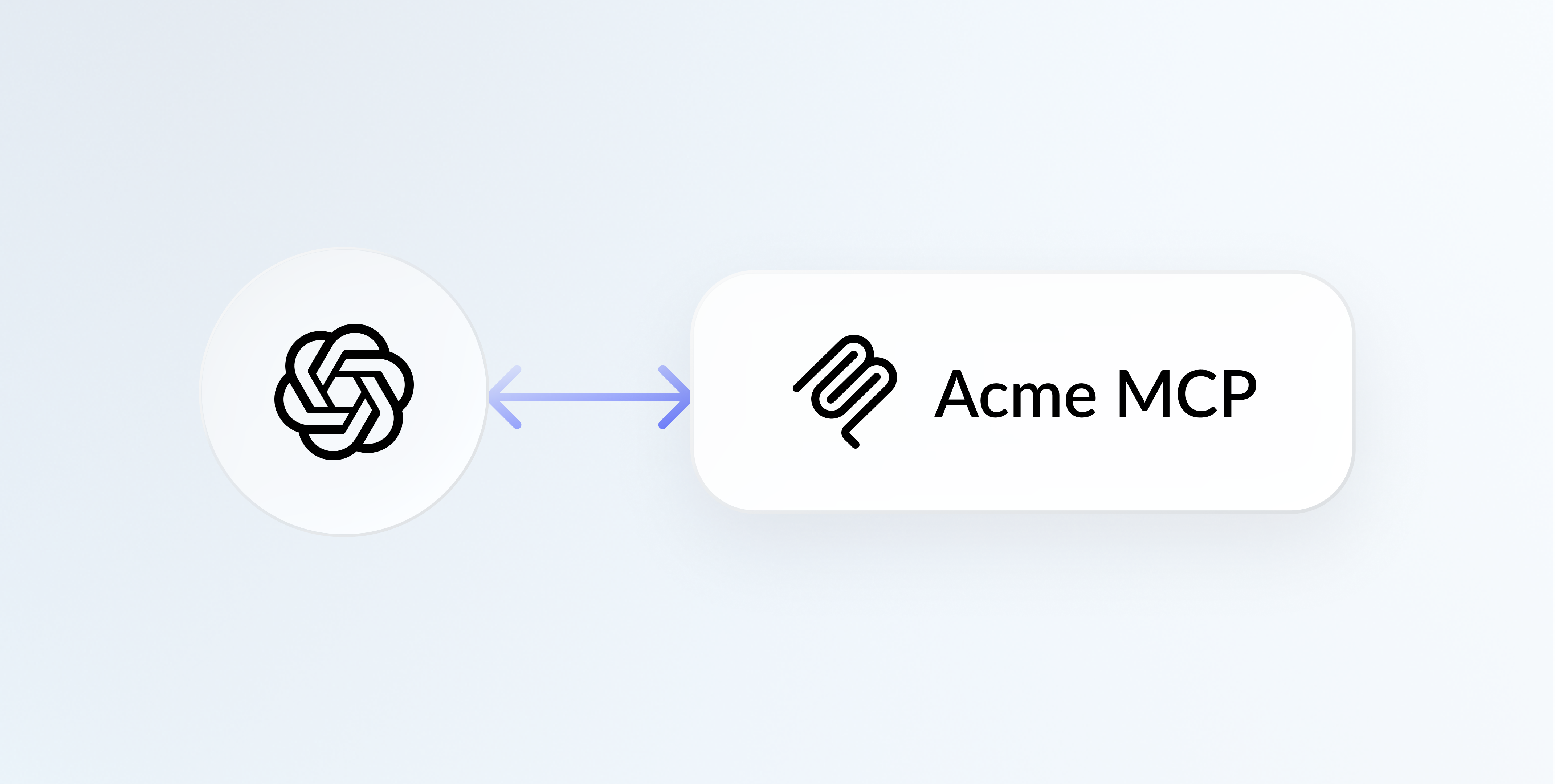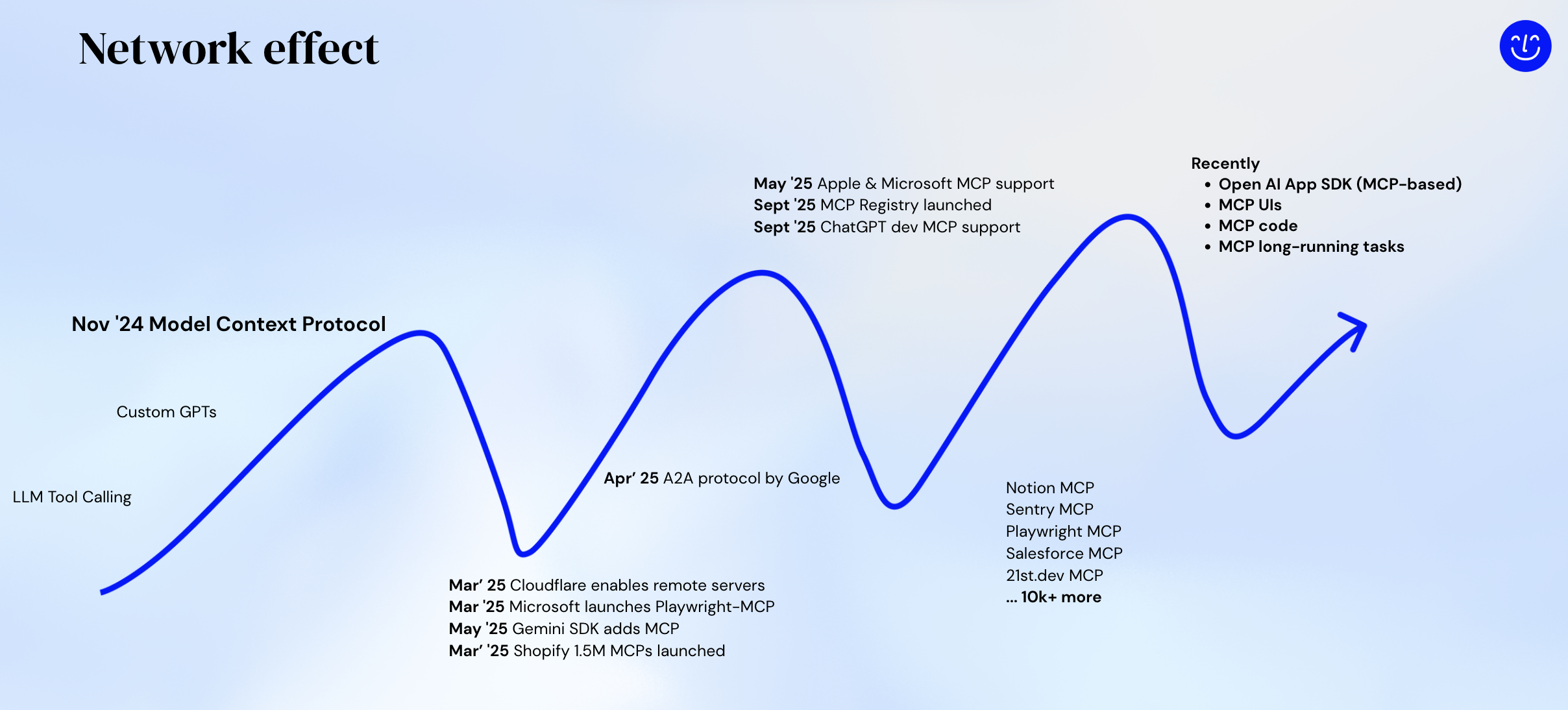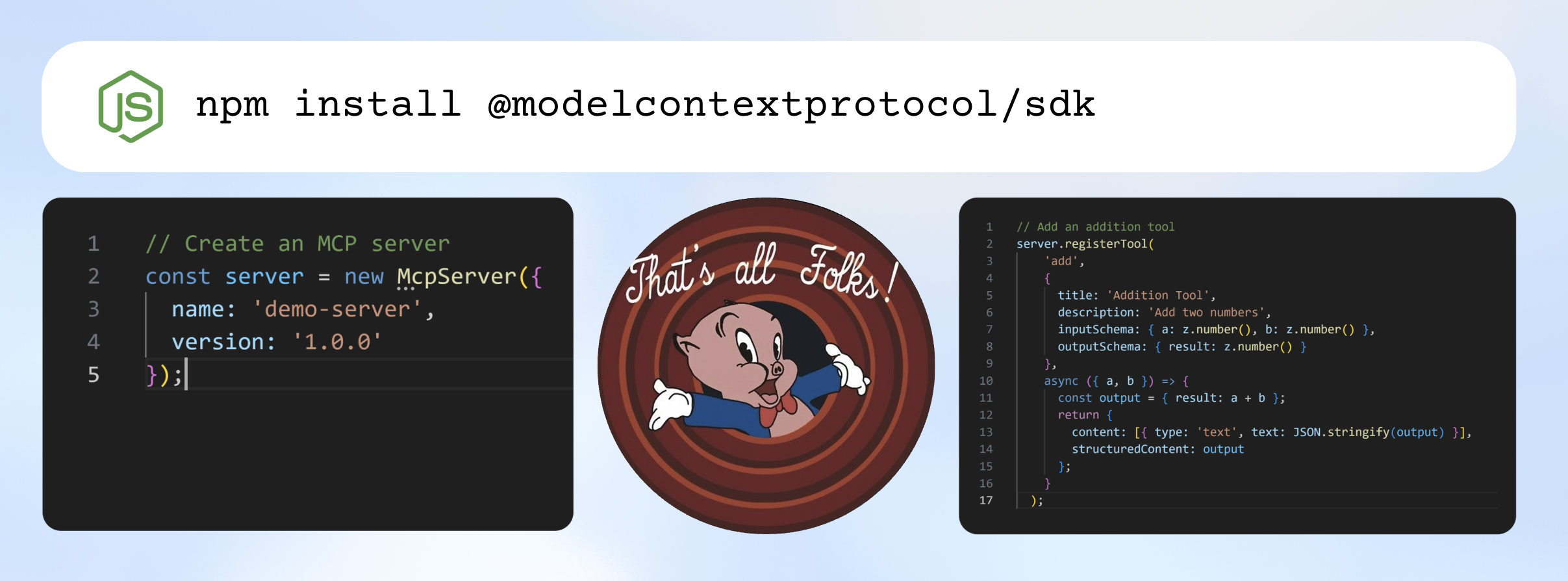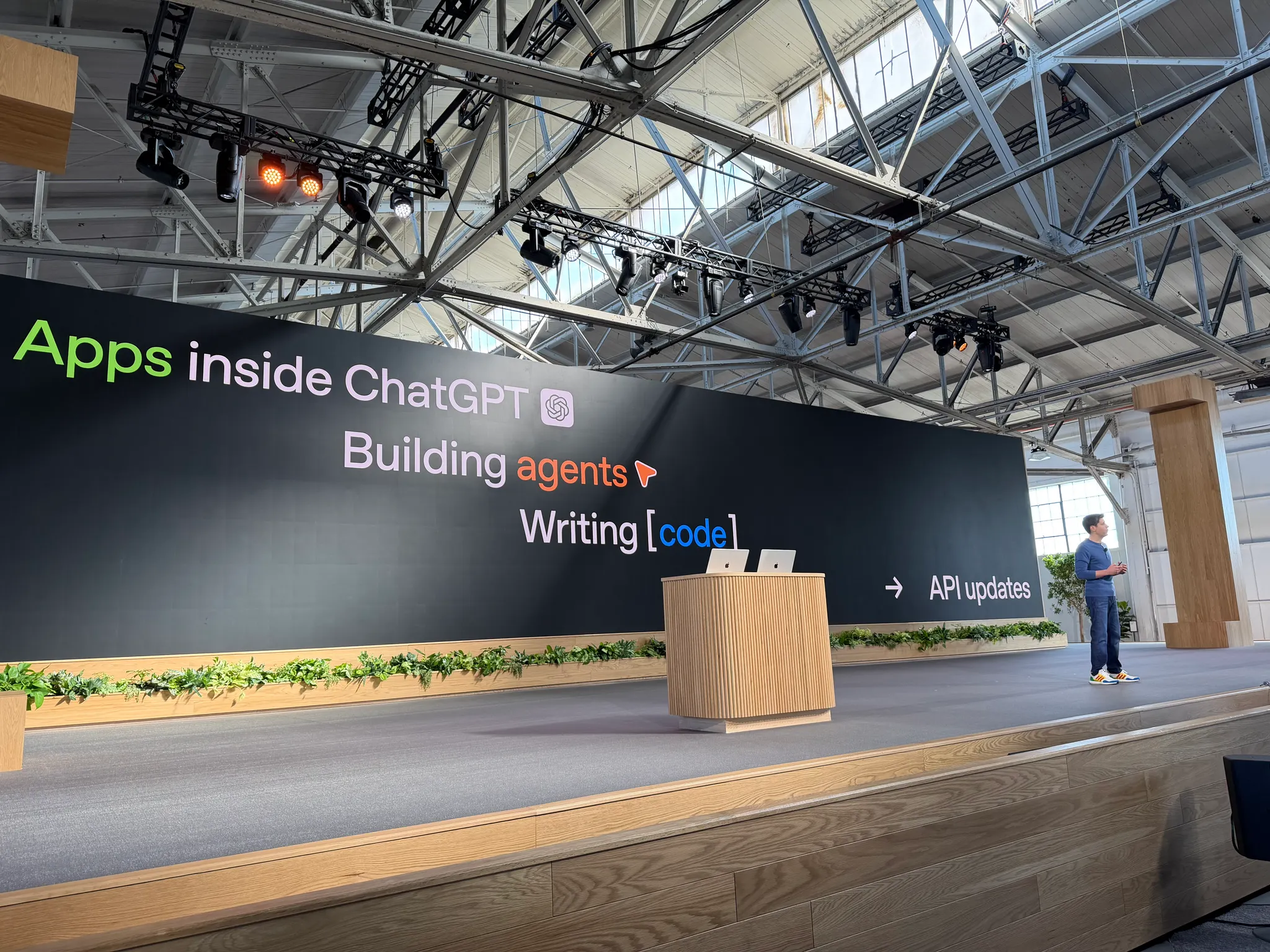MCP and ChatGPT Apps: The New Operating System for Modern Businesses

The Standard for LLM Integration
At its essence, MCP is a standard way for large language models to connect to tools and data. It elegantly solves the old NxM integration problem: instead of building custom connectors between every model and every app, everyone just speaks MCP.
The magic isn’t in doing something completely new — it’s in standardizing what already works. Once your product exposes an MCP interface, every LLM or AI client that supports the protocol instantly knows how to interact with it. Update your MCP, and all those clients understand the new version automatically.
This mirrors how the web itself grew: HTTP standardized content delivery, TCP/IP standardized communication, and MCP is now standardizing AI-to-app interaction.
Protocols are powerful because they create network effects. Like money or language, their value multiplies as more participants believe in and adopt them. And while other contenders exist—such as Google’s A2A or the Agent Communication Protocol (ACP)—the industry’s collective confidence is squarely behind MCP.
The Network Effect Is Real
The MCP story began in late 2024 and quickly gained unstoppable momentum. Within months, every major AI player joined the movement. Google integrated MCP into Gemini, Microsoft launched Playwright-MCP, Notion and Shopify rolled out their own connectors, and by mid-2025, more than 10,000 MCPs were live.
The growth has been staggering. Shopify alone accounted for 1.5 million MCPs. Even OpenAI and Microsoft embraced MCP across their ecosystems. What we’re seeing is the early internet all over again — a standard quietly binding together an emerging digital universe.
Each new MCP makes the network exponentially more valuable. The more tools that plug into the ecosystem, the more powerful every AI assistant becomes.

A New User Experience Paradigm
Beyond its technical significance, MCP is redefining how users interact with software. The traditional workflow—jumping between dashboards, tabs, and tools—is giving way to something radically simpler: doing everything directly from chat.
People don’t want to context-switch. They want to stay in the conversation and get things done seamlessly. MCP makes that possible by giving LLMs structured, machine-readable access to the world.
This marks a deeper shift in user experience—from designing for humans alone to designing for both humans and LLMs. The pattern looks like this: Human → Intent → LLM → Action. You express what you want, and the model decides how to get there.

MCP as a Product Strategy
For product builders, MCP is more than infrastructure—it’s a growth strategy.
Instead of waiting for users to come to your product, you can now bring your product to where they already are: inside ChatGPT, Claude, or Gemini. By exposing your features via MCP, your service becomes discoverable through the very assistants billions of people already use.
This new layer of distribution unlocks enormous potential. SaaS companies are experimenting with AI-native business models, such as agent-powered subscriptions or usage-based pricing. Others are using MCPs to improve conversion funnels by letting customers trial or interact with products conversationally before ever signing up.
In other words, MCP turns AI ecosystems into marketplaces—and every product that integrates gains a new acquisition channel.
MCP and Workplace Productivity
Inside organizations, MCP is transforming how teams operate.
Employees can connect third-party MCPs to automate their everyday tasks, while companies can expose their internal APIs as MCPs to power private copilots. This creates a single, intelligent layer that unifies tools, data, and processes across the business.
The result is a dramatic acceleration of workflows. Developers can debug directly through AI. Analysts can query company data without touching SQL. Sales and marketing teams can orchestrate tools with simple prompts. MCP becomes the connective tissue between people and the systems they use every day.
From Code to Production
Building with MCP starts small but grows fast. In just a few minutes, a developer can spin up a prototype MCP server. They expose a couple of API endpoints, test them in an AI client like ChatGPT or Claude, and immediately see their product come alive in a conversational context. It’s an eye-opening moment—the realization that you’ve just created an AI-ready extension of your product.

But soon you realise there is a large gap between prototype and production…
From Prototype to Production
Designing a well-structured MCP starts long before you write any code. The process begins with strategy, not syntax. Here’s how to approach it step by step:
1. Start with the business objective.
Every MCP should exist to serve a clear outcome — whether that’s opening a new acquisition channel, improving customer satisfaction (NPS), or streamlining internal workflows. Defining the “why” up front ensures you don’t build integrations that are technically impressive but strategically irrelevant.
2. Design for the LLM, not for humans.
Once the goal is clear, think about the building blocks: the tools, prompts, and resources your MCP will expose. What matters most is that each of these components is LLM-digestible — meaning the LLM can interpret and act on them directly. It’s a subtle but critical shift from designing for a user interface to designing for an AI interface.
3. Implement authentication and permissions early.
Access control is foundational. Whether your MCP will be used internally by employees or externally by customers, authentication and permissions determine what each user (or AI agent) can safely do. Robust design here protects both your infrastructure and your data.
4. Set up scalable hosting.
Your MCP should be reachable from any AI client, anywhere in the world. That requires solid hosting — either through a managed MCP hosting provider or your own cloud infrastructure. Low-latency, globally available endpoints ensure a smooth user experience.
5. Track analytics and logs.
Instrument your MCP to collect key metrics. Analytics reveal which tools get used most, where errors or slowdowns occur, and how your integration contributes to business outcomes. Logging is equally important for debugging and compliance.
6. Prioritize security at every layer.
Finally, treat MCP security as non-negotiable. Guard against prompt injection, data leakage, and unauthorized actions. Sanitize inputs and outputs, and make sure no personally identifiable or sensitive information can be inadvertently shared through AI interactions.
A well-designed MCP doesn’t just connect tools — it connects business intent with intelligent automation, safely and at scale.

The Time to Experiment Is Now
MCP and ChatGPT Apps aren’t just new features — they represent a new way to build software. The world is shifting fast toward AI-native interfaces, where users talk to tools instead of clicking through dashboards.
Every business should start experimenting today. Build a small MCP. Ship a ChatGPT App. See how your product behaves when AI becomes the interface. These early steps will give you the intuition — and the advantage — for what’s coming next.
If you’re exploring how MCP can amplify your product or organization, let’s connect.








.jpg)